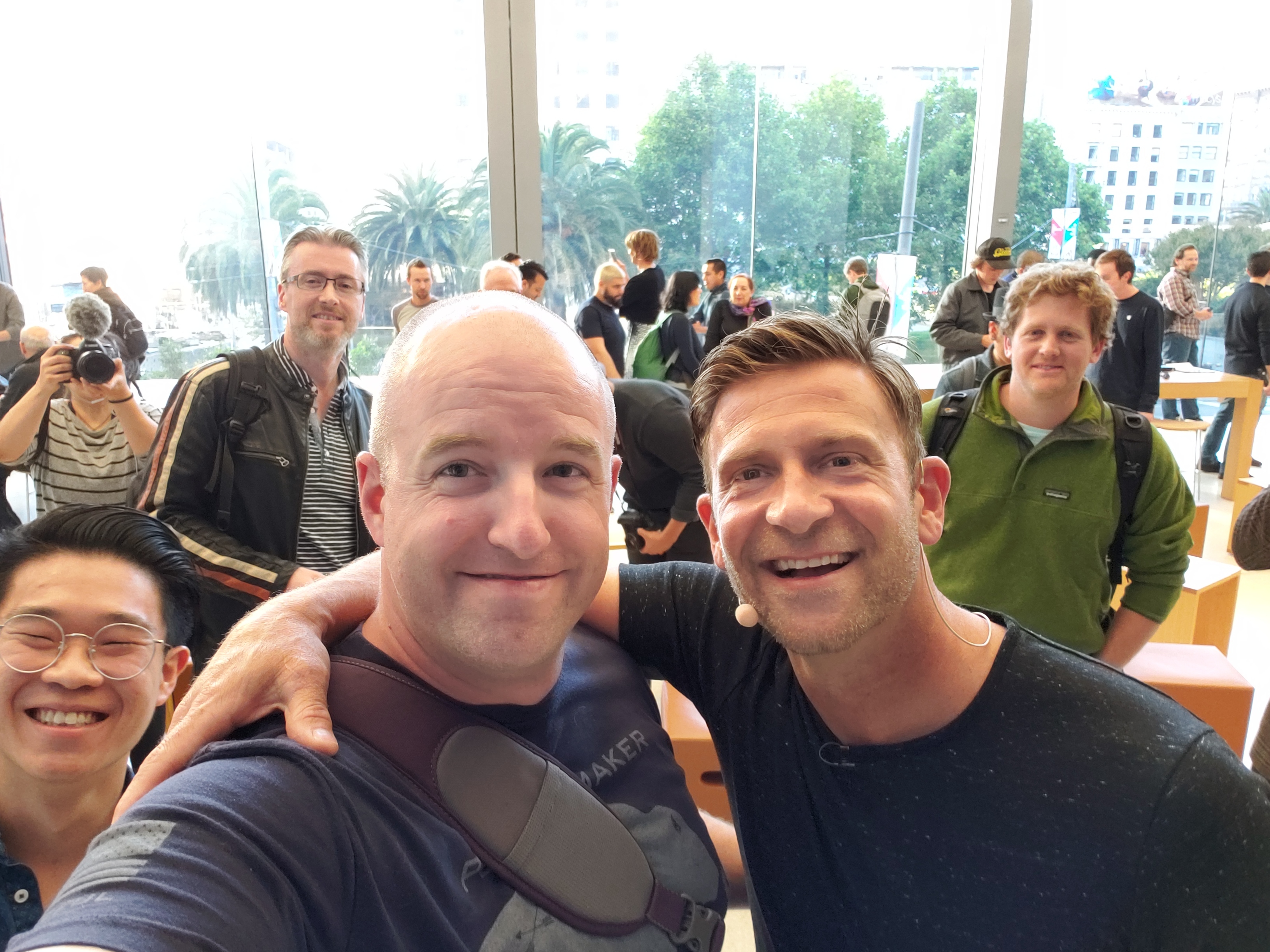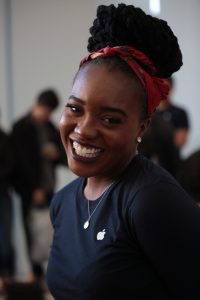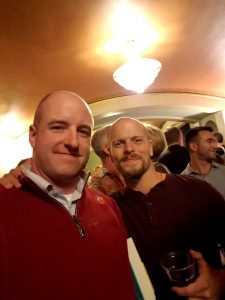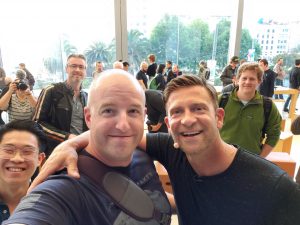
The Apple folks did a good thing recently: They partnered with Chase Jarvis’ (@ChaseJarvis) CreativeLive for their #todayatapple series, and brought him down to the main Union Square store in San Francisco for a photo workshop. Being on his email list, I got the heads-up on Sunday morning ahead of the event.
“Honey, what are we doing Thursday night?”
“Nothing…”
“Is it okay if I go into SF for a photo workshop… it’s free…”
Needless to say, I got the kitchen pass blessed and rode the bike to work last Thursday so I could get into SF without fighting the traffic in the truck. I had recently purchased a FasTrak tag for the bike so I could navigate the toll bridges more efficiently, but to date haven’t seen any activity on my account, so I expect I’ll have to respond to a ‘violation notice’ because their system sucks. That’ll likely be a story for another post. That said, I made it from the office to downtown in under an hour, which is a pretty decent run, considering how wide the Concours is. However, once I got there, it took an extra 10 minutes to go the final two blocks due to the one-way bus streets, construction, and other standard stupidity.
I made it to the parking garage with nearly an hour to spare, so I spent some time doing random street photography out in front of the Apple store. Nothing post-worthy, but good practice nonetheless. I moseyed into the store and poked around at the macbooks and macbook pros, then headed upstairs to get a decent seat in the event area. Interestingly, I sat next to another guy who happens to be an astrophotographer (among other things). You should go check out Matt’s website. Seriously.
After waiting a bit, Chase came out. There was LOT to unpack from his ~2 hour talk, but here are some of the highlights:
There are currently 7,106 known languages on the planet. The photograph is universal. It crashes through language barriers and instantly creates connections. With the advent of the camera phone, this barrier-busting capability has become available to nearly everyone. If the phone is a Swiss Army knife, the first cameras were like the toothpick: nice to have, but if it’s missing, oh well… Now they’re a main blade.
So how do you go from taking photographs to ‘making’ them? 3 things:
-Create Connection
-Crafting Composition
-Shaping Light
1. Connection between the photographer and the subject allows you to pass along feeling: What does it feel like to be with this person? What does it feel like to be in this place? What does it feel like to be in the presence of this thing? (Seeing a pattern yet?) For people, just spending a minute connecting with them, asking them “What’s something you’re proud of?”, or showing them images from earlier in the shoot can get them to open up and come alive in your pictures. As an example of how to accomplish this, at the beginning of this section, Chase had us go find someone nearby who we hadn’t come in with and just take their picture. One of the Apple employees was standing behind me, and was happy to oblige

Not a bad shot per se, but pretty flat. Toward the end of this section, Chase had us go back to the same person, then spend a full 15 seconds in (sorta awkward) constant eye-contact. It was a bit weird, and he didn’t recommend it for professional work, but as an exercise in breaking in and creating a connection with someone, it worked. Very well:

Granted, the 2nd shot was taken with my dSLR instead of with my camera phone, but the difference is staggering. The compositions are basically the same (standard portraiture with subject centered in the frame), but in the second shot I’m taking the picture of someone I’m connected to.
2. Composition is both what’s in the frame, and what’s not. The great part is that you get to choose! Chase noted that most photographs fail because they’re too complex. And many more get ignored because they’re shot from the same perspective as we see everyday. Most images are taken from between 4′-6′ off the ground, since that’s where most people’s heads are. So like I’ve mentioned before: Change your perspective. Photos need 2 things: Raw stopping power, and A little bit more… Think about what you’re including and excluding.
3. Shaping light: Pay attention to the position of the light. He went through a series of photos showing the same subject with the same lighting (model standing next to a window), but with the photographer moving around. There are huge differences between flat light (light behind the photographer), side lighting, and back lighting (light behind the subject)… and each can work depending on the subject and what feeling you’re trying to pass along. Someone asked if it might be a good idea for camera phones to drop the flash, since direct, front-on lighting from a flash generally looks terrible. In response, Chase had someone come up out of the crowd, and noted: Your subject probably has a phone too… He then proceeded to ask for his volunteer to turn on the flash (flashlight mode) on his phone, and Chase held it above and to the side of the volunteer’s face, making an off-camera lighting solution using nothing more than the volunteer’s own phone.
This was a great experience, many kudos to Chase, CreativeLive, and Apple for co-creating this event series. I’m up to 2 major interactions with people I follow in the creative/business space since we moved to the Bay area, and am really happy to have been able to take advantage of our location. The first was meeting Tim Ferriss:

“Be different, not better.” – Chase Jarvis


Leave a Reply